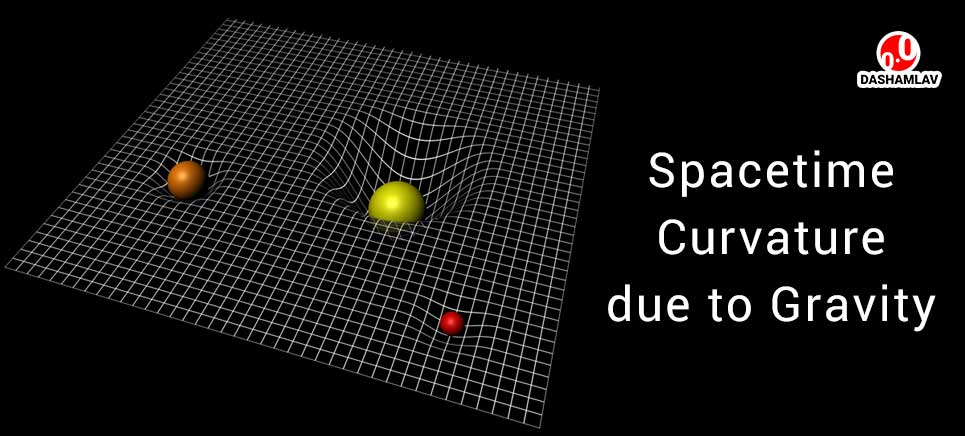In the year 1905, Albert Einstein postulated the existence of spacetime — the four-dimensional space in which everything else exists. Gravitational waves are disturbances in the spacetime that travel at the speed of light in wave form. Just like any other waves, gravitational waves also move away from the point of origin. First direct detection of gravitational waves happened on 14 September 2015 using advanced LIGO detectors.
You can visualize spacetime as a water pond that houses fish, other aquatic animals, plants, pebbles, rocks etc. When a fish moves through pond, it causes waves in the water (we can see these waves when fish moves near the water surface). The bigger the fish, bigger will be the waves. Gravitational waves move in spacetime just like ripples move through water.
In 2017, Rainer Weiss, Kip Stephen Thorne and Barry Clark Barish were awarded the Nobel Prize in Physics for playing key role in the direct detection of gravitational waves. This detection also proved that Albert Einstein was right about his spacetime postulate and existence of gravitational waves.
Understanding Gravitational Waves
Space objects, like stars, planets and black holes, create curvature in spacetime. Massive the object, greater would be the curvature. As these objects move through space, their curvature also moves along. But when these objects move at a very high speed the the changes in curvature spin off and move outward like a wave at the speed of light.

To an observer, gravitational waves appear to stretch and squeeze things that come in their path. The amount of distortion gravitational waves can cause is inversely proportional to the distance from the origin. This means that nearer the origin, gravitational waves will stretch and squeeze objects more. This is because of the fact that as these waves move away from origin, they lose intensity.
Sources of Gravitational Waves
In order to generate gravitational waves, the cosmic objects have to be of great mass and they must be accelerating at a very high speed. The merger of two binary neutron stars, or a neutron star and a black hole, has been observed to be causing the emission of gravitational waves.
The following image shows an artist’s impression of gravitational waves generated by two inspiralling binary neutron stars.

What is LIGO?
Laser Interferometer Gravitational-Wave Observatory (LIGO) are two observatories created to detect cosmic gravitational waves. These are located in the United States in Livingston (Louisiana) and Hanford Site (Washington). LIGO, and a similar European observatory Virgo, detected the gravitation waves on 14 September 2015.
How are Gravitational Waves Detected?
Because gravitational waves can stretch and squeeze things in its path, if we can detect this stretching and squeezing, we can detect the presence of gravitational waves.
LIGO observatory has two arms which are two miles long. These arms use sophisticated lasers, mirrors and other highly sensitive equipment. When a gravitational waves passes through Earth, they, just like everything else, stretch and squeeze these LIGO arms as well. LIGO sensors detect this extremely small change in the length of arms.

How small change do gravitational waves cause? Well, the waves that we have detected, they originated from a very far away source. So, by the time they reach Earth, their intensity became very low and thus they caused negligible change in the objects on Earth.
Negligible, but detectable!
It is predicted that these waves will cause a change of 1 part in 1020. It means that if the length of an object is 1020 meters, then this object will stretch and squeeze by one meter.
Use the citation below to add this article to your bibliography
"Gravitational Waves: LIGO Observatory, Detection, Theory and Speed." Dashamlav.com. Web. 27 July 2024. <https://dashamlav.com/gravitational-waves-ligo-observatory-detection-theory-and-speed/>
Dashamlav.com, "Gravitational Waves: LIGO Observatory, Detection, Theory and Speed." Accessed 27 July 2024. https://dashamlav.com/gravitational-waves-ligo-observatory-detection-theory-and-speed/
"Gravitational Waves: LIGO Observatory, Detection, Theory and Speed." (n.d.). Dashamlav.com. Retrieved 27 July 2024 from https://dashamlav.com/gravitational-waves-ligo-observatory-detection-theory-and-speed/
